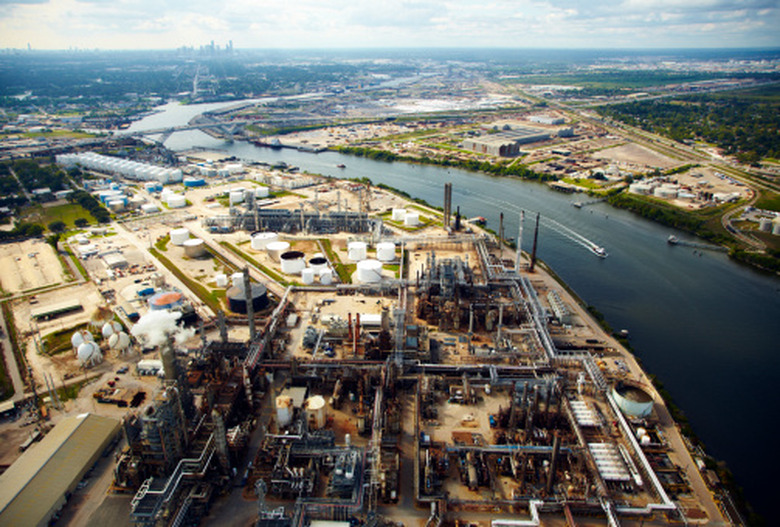Types Of Man-Made Pollutants
Man-made pollutants can threaten human health and compromise the natural ecosystem and environment. Man-made pollution is generally a byproduct of human actions such as consumption, waste disposal, industrial production, transportation and energy generation. Pollutants can enter the surrounding environment in various ways, either through the atmosphere, water systems or soil, and can persist for generations if left untreated.
Air Pollution
Air Pollution
Air pollution occurs when harmful chemicals or particulate matter are introduced into the atmosphere. Depending on the type and severity, air pollution can damage human and animal health as well as the natural environment. Major contributors to air pollution are transportation, industry and agriculture, which respectively release large amounts of carbon dioxide, sulfur dioxide and methane (to name a few) into the atmosphere. Furthermore, as air pollution changes the chemical composition of the atmosphere it can lead to systemic changes in climate systems.
Water Pollution
Water Pollution
Water pollution occurs as bodies of water (oceans, lakes, rivers, streams, aquifers and atmospheric water) become contaminated by man-made waste substances. Water contamination can have adverse effects on human health (for instance, when drinking water sources are contaminated) and surrounding ecosystems. Pollution of local water systems can occur through individual activities (for example, disposing of consumer detergents down sewer drains), industry or agricultural (such as the runoff of chemical fertilizers).
Soil Pollution
Soil Pollution
Soil pollution occurs as harmful man-made substances leach into the soil. This can be caused by pesticide run-off, leakage of underground storage tanks, dumping, percolation of contaminated surface water to lower soil strata or the presence of landfills. Soil contamination by man-made pollutants can have devastating consequences to ecosystems as contaminants travel up the food chain from plants to higher-order carnivores. Contamination of soil used for agriculture or in proximity to a public drinking water source can have similarly dire consequences for human health.
Radioactive Pollution
Radioactive Pollution
Radioactive pollution can result from the improper disposal of nuclear waste, the accidental discharge of core material from a nuclear power plant or the detonation of a nuclear explosive device. Depending on the type of nuclear material present, radioactive contamination can last for decades, as each nuclear isotope has its own half-life. Ionizing radiation is destructive to living tissue and can cause chronic illnesses (particularly forms of cancer), mutation and, in large doses, death immediately following exposure.
Cite This Article
MLA
Kwak, Patrick Stothers. "Types Of Man-Made Pollutants" sciencing.com, https://www.sciencing.com/types-manmade-pollutants-8329911/. 22 November 2019.
APA
Kwak, Patrick Stothers. (2019, November 22). Types Of Man-Made Pollutants. sciencing.com. Retrieved from https://www.sciencing.com/types-manmade-pollutants-8329911/
Chicago
Kwak, Patrick Stothers. Types Of Man-Made Pollutants last modified August 30, 2022. https://www.sciencing.com/types-manmade-pollutants-8329911/
